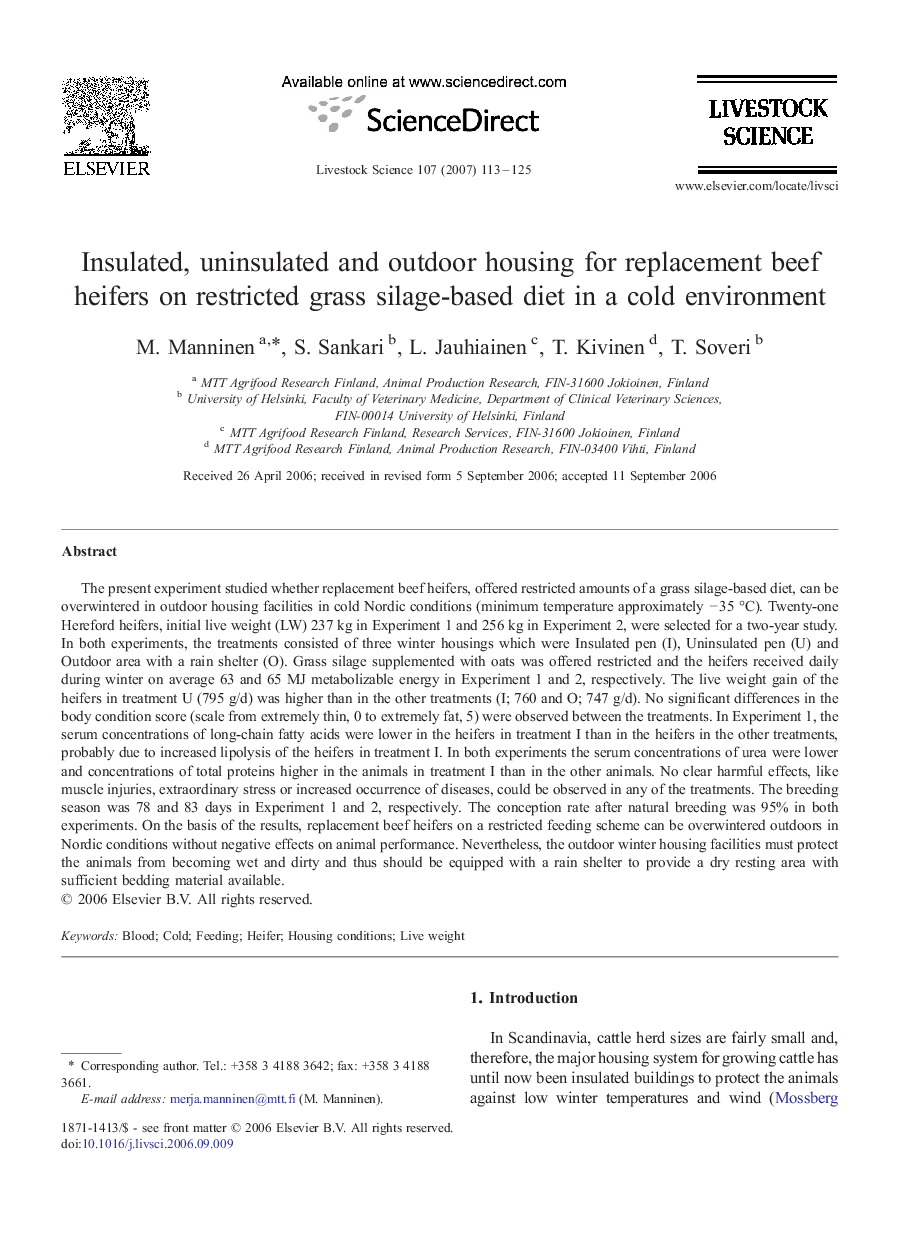| Article ID | Journal | Published Year | Pages | File Type |
|---|---|---|---|---|
| 2449042 | Livestock Science | 2007 | 13 Pages |
The present experiment studied whether replacement beef heifers, offered restricted amounts of a grass silage-based diet, can be overwintered in outdoor housing facilities in cold Nordic conditions (minimum temperature approximately − 35 °C). Twenty-one Hereford heifers, initial live weight (LW) 237 kg in Experiment 1 and 256 kg in Experiment 2, were selected for a two-year study. In both experiments, the treatments consisted of three winter housings which were Insulated pen (I), Uninsulated pen (U) and Outdoor area with a rain shelter (O). Grass silage supplemented with oats was offered restricted and the heifers received daily during winter on average 63 and 65 MJ metabolizable energy in Experiment 1 and 2, respectively. The live weight gain of the heifers in treatment U (795 g/d) was higher than in the other treatments (I; 760 and O; 747 g/d). No significant differences in the body condition score (scale from extremely thin, 0 to extremely fat, 5) were observed between the treatments. In Experiment 1, the serum concentrations of long-chain fatty acids were lower in the heifers in treatment I than in the heifers in the other treatments, probably due to increased lipolysis of the heifers in treatment I. In both experiments the serum concentrations of urea were lower and concentrations of total proteins higher in the animals in treatment I than in the other animals. No clear harmful effects, like muscle injuries, extraordinary stress or increased occurrence of diseases, could be observed in any of the treatments. The breeding season was 78 and 83 days in Experiment 1 and 2, respectively. The conception rate after natural breeding was 95% in both experiments. On the basis of the results, replacement beef heifers on a restricted feeding scheme can be overwintered outdoors in Nordic conditions without negative effects on animal performance. Nevertheless, the outdoor winter housing facilities must protect the animals from becoming wet and dirty and thus should be equipped with a rain shelter to provide a dry resting area with sufficient bedding material available.
